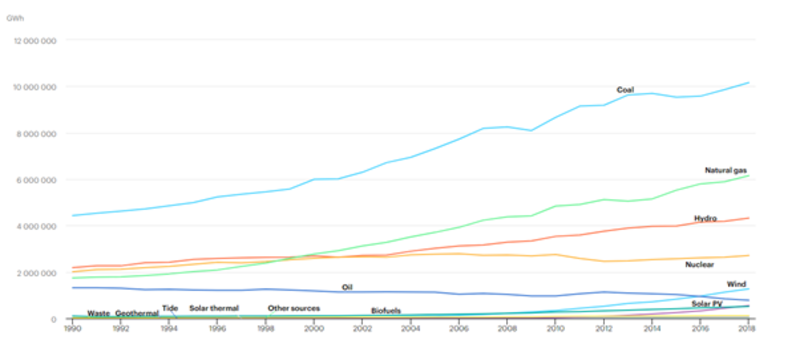Disclaimer
Please read this important information before proceeding further. It contains legal and regulatory notices relevant to the information contained on this website.
The information contained in the Website is NOT FOR RETAIL CLIENTS – The information contained in the Website is solely intended for professional investors, defined as investors which (1) qualify as professional clients within the meaning of the Markets in Financial Instruments Directive (MiFID), (2) have requested to be treated as professional clients within the meaning of the MiFID or (3) are authorised to receive such information under any other applicable laws. The value of the investments may fluctuate. Past performance is no guarantee of future results. Investors may not get back the amount originally invested. Neither Robeco Institutional Asset Management B.V. nor any of its affiliates guarantees the performance or the future returns of any investments. If the currency in which the past performance is displayed differs from the currency of the country in which you reside, then you should be aware that due to exchange rate fluctuations the performance shown may increase or decrease if converted into your local currency.
Robeco Institutional Asset Management UK Limited (“RIAM UK”) markets the Funds of Robeco Institutional Asset Management B.V. (“ROBECO”) to institutional clients and professional investors only. Private investors seeking information about the Robeco Funds should consult with an Independent Financial Adviser. ROBECO will not be liable for any damages or losses suffered by private investors accessing the website.
RIAM UK is an authorised distributor for ROBECO Funds in the UK and has marketing approval for the funds listed on the website, all of which are UCITS Funds. ROBECO is authorised by the AFM and subject to limited regulation by the Financial Conduct Authority.
Many of the protections provided by the United Kingdom regulatory framework may not apply to investments in ROBECO Funds, including access to the Financial Services Compensation Scheme and the Financial Ombudsman Service. No representation, warranty or undertaking is given as to the accuracy or completeness of the information on this website.
If you are not an institutional client or professional investor, you should therefore not proceed. By proceeding, please note that we will be treating you as a professional client for regulatory purposes and you agree to be bound by our terms and conditions.
If you do not accept these terms and conditions, as well as the terms of use of the website, please do not continue to use or access any pages on this website.
Sustainable Investing
Renewable energy investing
Renewable energy is derived from sources that are naturally replenished, and can therefore continue to generate electricity subject to natural conditions. It differs from sources of energy that are finite and will eventually run out, led by fossil fuels, which cannot be replenished once extracted.
Sources of renewable energy
There are two ways to invest in renewable energy: either by buying the equities or bonds of the electricity or utility companies supplying the energy, or of the companies making components for the equipment that is needed to create power. This can be done through strategies such as the Robeco Smart Energy and Smart Mobility strategy, which specifically target this sector.
There are five principal sources of renewable energy:

Hydroelectric power

Wind power

Solar power

Biomass power

Geothermal power
Creating returns that benefit the world we live in

Energy generation by source: coal remains the world leader, while hydro is third.
Source: IEA
New sources of energy
One source of renewable energy that has the potential to be tapped is tidal power. This is a form of hydroelectric power that spreads barrages across river estuaries to harness the tide coming in and out. However, this requires a much larger geographical reach than a dam to tap into tides, and is much weaker than water continuously flowing through a dam or over a waterfall.
There is also growing interest in green hydrogen. Water is broken down into its component parts of hydrogen and oxygen using electrolysis that is powered by electricity drawn from renewable sources. The hydrogen that is released can then be used to power fuel cells that could replace internal combustion engines in the transport industry. However, large-scale electrolysis equipment is required to separate the hydrogen, making it much more expensive than other renewable sources at present.
Meeting the Paris Agreement
The fact that virtually all sources of renewable energy are harnessed by turbines and not burned means they do not directly produce greenhouse gas emissions. They are therefore seen as playing a major role in achieving the levels of decarbonization needed to meet the Paris Agreement.
And renewable energy is growing in popularity. Once a niche industry, it has accounted for 28% of the world’s electricity generation in 2020, according to the International Energy Agency’s (IEA) Global Energy Review.1 Of this, 17% comes from hydro, 4% from wind, 3% from solar, 2% from biofuels, and 2% from other sources such as geothermal.
However, the sector also carries ESG risks, such as poor labor conditions in the mining of minerals needed for renewable energy equipment, and deforestation or land clearance in making space for large-scale solar parks.
Footnote
1Global Energy Review 2020
















